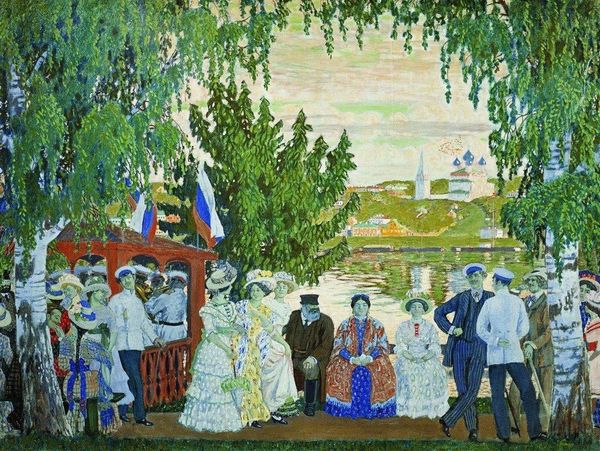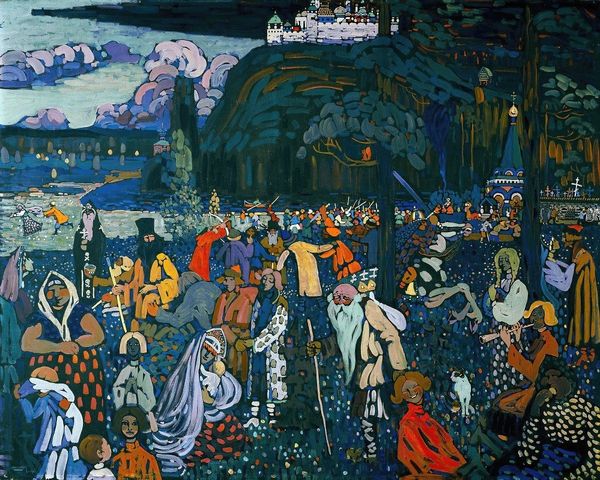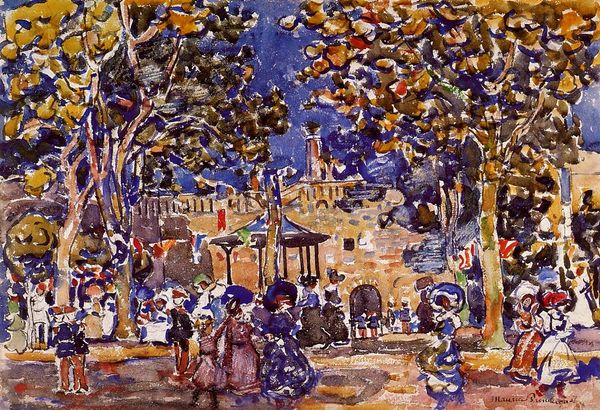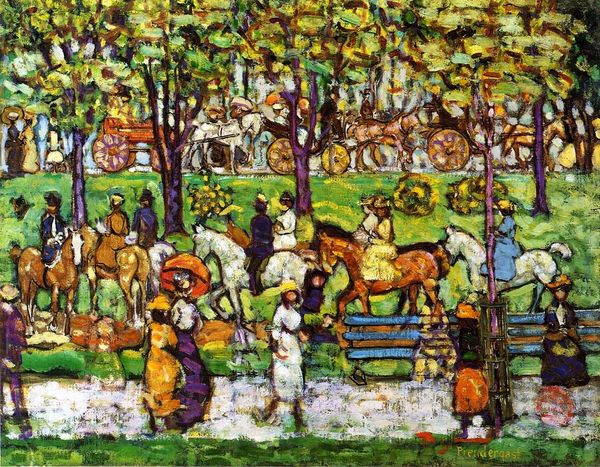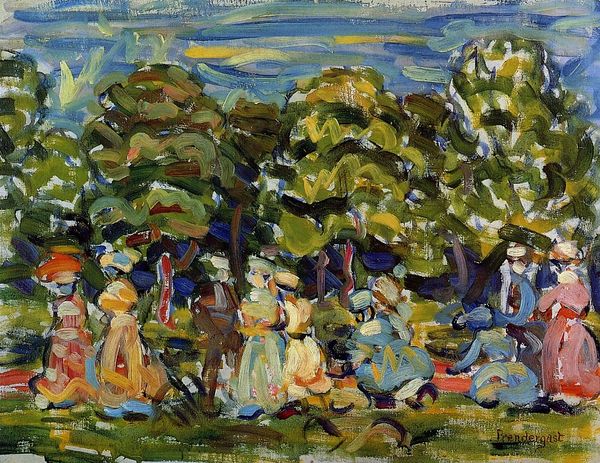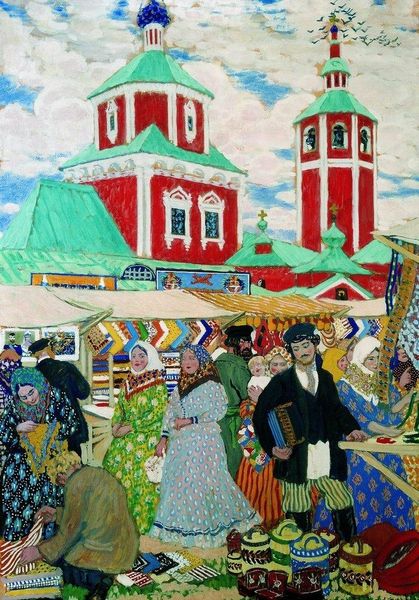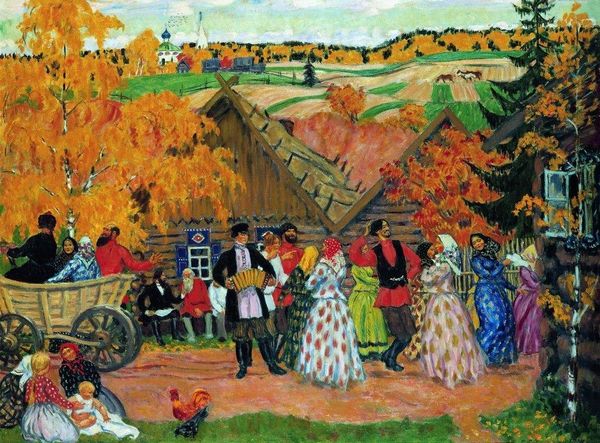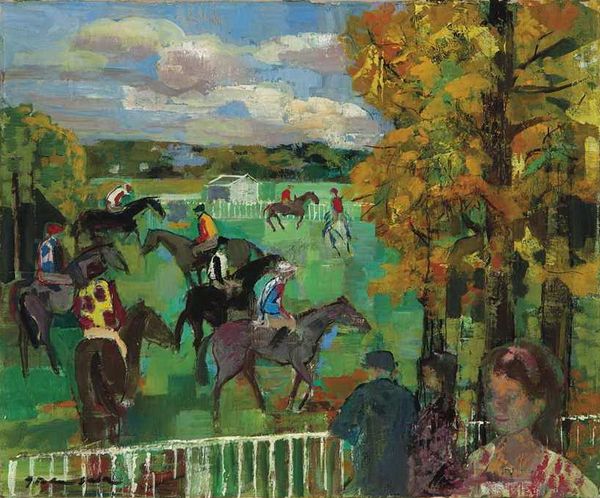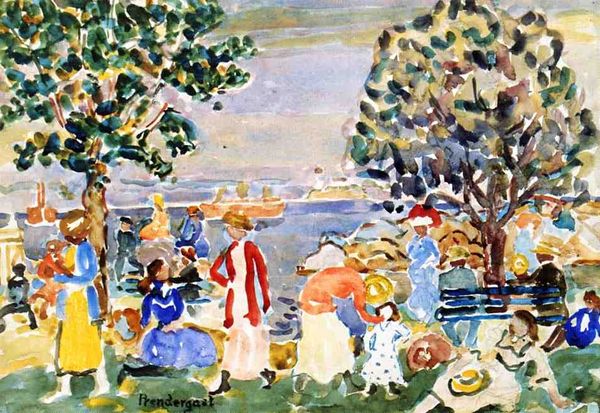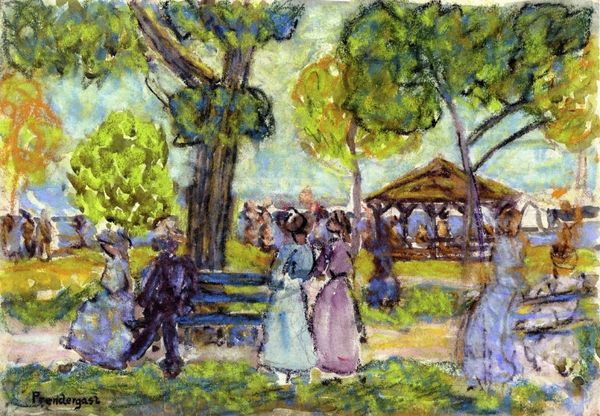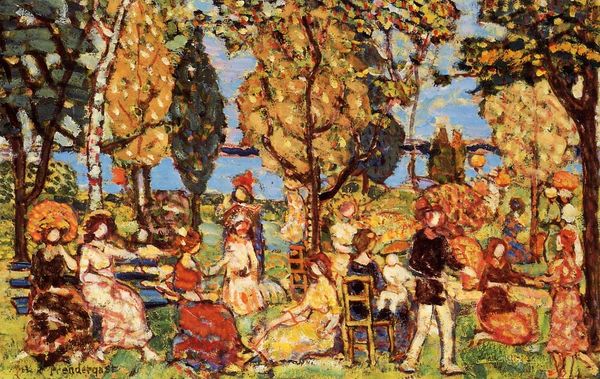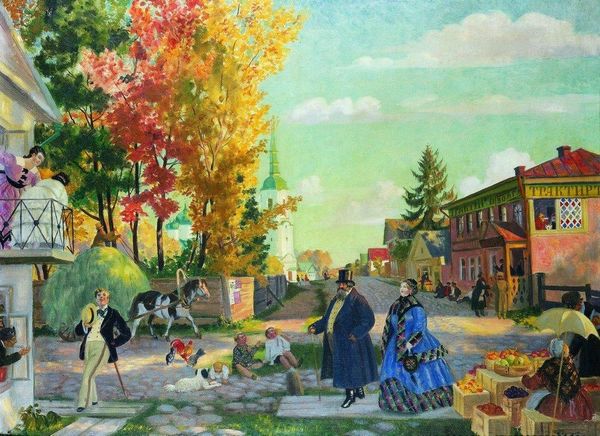
painting, oil-paint
#
tree
#
fauvism
#
fauvism
#
painting
#
oil-paint
#
landscape
#
house
#
impressionist landscape
#
figuration
#
group-portraits
#
expressionism
#
orientalism
#
russian-avant-garde
#
genre-painting
#
expressionist
#
building
Copyright: Public domain
Editor: This is Boris Kustodiev's "Village Holiday" from 1910. It's an oil painting and the colors are incredibly vibrant. There's such a joyful, celebratory atmosphere, and it feels really immersive. How do you interpret this work? Curator: That sense of joy you feel is palpable, and I think crucial to understanding Kustodiev's work. While painted in 1910, just before the upheavals of World War I and the Russian Revolution, it idealizes a specific vision of rural Russian life. Notice the choice of "holiday" as a theme. Considering this within a context of rapid industrialization and social change, how might we see this image as a form of cultural preservation, perhaps even a subtle form of resistance? Editor: Resistance? That’s interesting; I hadn’t thought of it that way. I just saw a happy village scene. Curator: Consider the idealized depiction of the peasantry – their clothing, the community, the very picturesque nature of the village. He might be pushing back against modern life encroaching on traditional folk ways. The Fauvist use of bright, almost jarring color is key, don’t you think? It amplifies the emotional impact, doesn’t it? Is he selling something by depicting what he truly believes is pure beauty or do we ask for whom does Kustodiev tell this tale? Editor: I see your point. The bright colors almost seem to amplify the feeling, to be pushing something like "this is worth saving." Curator: Exactly. This tension, between celebrating tradition and navigating modernity, is really what makes the painting resonate. Editor: I've learned so much, approaching this seemingly straightforward landscape through historical and political lenses reveals more complexity. Curator: Indeed! Recognizing the power dynamics and societal forces embedded in artistic choices gives a deeper meaning, a richness we can bring to our interpretations of other works.
Comments
No comments
Be the first to comment and join the conversation on the ultimate creative platform.
